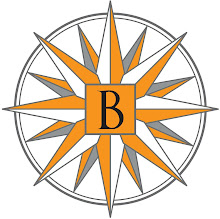 A sandy barrier island sited about 15 miles SW of Biloxi, Miss., offered the only deep-water anchorage between Mobile Bay and the Mississippi River. Thus Ile aux Vasseaux, or Ship Island, had great commercial and strategic importance. The US built a conical brick lighthouse (left) there in 1853. Its pyramidal wooden 1886 replacement burned down in 1972. A reproduction of the latter was dedicated in 1999, only to be washed away--along with the eastern half of the island--by Hurricane Katrina in 2005. Fort Massachusetts, begun in 1859, still stands.
A sandy barrier island sited about 15 miles SW of Biloxi, Miss., offered the only deep-water anchorage between Mobile Bay and the Mississippi River. Thus Ile aux Vasseaux, or Ship Island, had great commercial and strategic importance. The US built a conical brick lighthouse (left) there in 1853. Its pyramidal wooden 1886 replacement burned down in 1972. A reproduction of the latter was dedicated in 1999, only to be washed away--along with the eastern half of the island--by Hurricane Katrina in 2005. Fort Massachusetts, begun in 1859, still stands.Harper's Weekly (via sonofthesouth.net) described what happened at Ship Island, Miss., 150 years ago this week:
THE OCCUPATION OF SHIP ISLAND.
The United States steamer-transport Constitution, Captain A. T. Fletcher, arrived at Fortress Monroe on 15th, where she called for orders, on her return from Ship Island, Mississippi Sound, having safely landed at the latter place, December 4, the two regiments (Twenty-sixth Massachusetts, and Ninth Connecticut), which embarked on her at Boston, the 18th and 21st of November. In this southward expedition, after proceeding to Portland for the Twelfth Regiment of Maine, which did not embark on her, the Constitution proceeded to Fortress Monroe, November 23, where she arrived on the 26th. She coaled, and left on the 28th, and, after a pleasant passage, arrived at Ship Island, Mississippi Sound, December 3.Her arrival here was as gratifying as it was unexpected by the little fleet and small garrison which have been holding the place against constant threats, and occasional attacks from the rebels. By the assistance of two large river steamers, which had been captured in Mississippi Sound only a short time previous to her arrival, the troops and material of war, and subsistence stores, were landed between the 4th and 8th of December—a single accident only occurring, by which one of the steel rifled guns belonging to Captain Manning's Light Battery was lost overboard. The two regiments were comfortably encamped on the island, near the light-house, and the Salem Battery near the fortification. On the 8th the last of the cargo was landed on the beach, and was taken charge of by Commissary Butler, brother of Major-General Butler, who will probably join the expedition in a short time with a large accession to the force.
Learn more about Ship Island--the "Plymouth Rock of the Gulf Coast"--and Fort Massachusetts at mssshipisland.com and Wikipedia.










